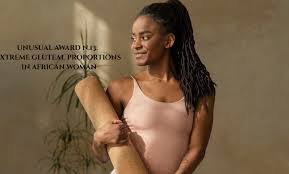Introduction
In a world fascinated by the extraordinary, “unusual awards” often highlight the most distinctive features of human diversity. From the tallest people on Earth to individuals with rare talents, these features capture the imagination of the public. One particularly polarizing and curious “award” often discussed in pop culture and social media is extreme gluteal proportions in African women — a term that has raised both eyebrows and important conversations about genetics, beauty standards, and cultural context.
But what does this mean, and why is it relevant in discussions of human diversity?
This blog explores the biological, anthropological, and cultural backdrop behind this unusual award and delves into the myths and realities surrounding it.
A Look at the Phrase: What Does It Mean?
The term “extreme gluteal proportions” describes enlarged buttocks, often prompting broader discussions when linked to African women.
It also evokes historical and cultural significance. From a clinical or anatomical standpoint, we examine “gluteal proportions” by analyzing the size, fat distribution, and musculature of the gluteus maximus and nearby areas. However, we must avoid reducing these human traits to mere curiosities. Genetics, environment, and evolution all shape these physical characteristics.
Genetic Foundations
Scientific studies suggest that genetics play a major role in determining body fat distribution. Certain populations, including many African and Afro-descendant groups, have a higher prevalence of a trait known as steatopygia — a condition characterized by a substantial accumulation of fat on the buttocks.
Steatopygia appears most prominently in Khoisan women of southern Africa and occurs in other African ethnic groups variably.
. It’s believed to be an evolutionary adaptation for energy storage, thermoregulation, and reproductive signaling.
The Historical Gaze
An honest discussion about gluteal proportions in African women must include Sarah Baartman, the “Hottentot Venus.” A Khoikhoi woman from South Africa, she was taken to Europe in the early 19th century and exhibited in freak shows — a practice steeped in racism, misogyny, and colonial exploitation.
Baartman’s tragic story warns us how fascination with physical differences can quickly dehumanize. People objectified and commodified Black women’s bodies, and she became a symbol of that history.
In many ways, the so-called “unusual award” echoes these problematic attitudes. Today, while the language has evolved and the media is more subtle, the core issues of objectification, voyeurism, and racial fetishism still lurk in the background.
The Cultural Side: Celebrated vs. Stigmatized
Unlike in Western cultures where certain body ideals have traditionally leaned toward slimness, many African and Afro-diasporic societies celebrate curvaceousness. People in West Africa, Central Africa, and the Caribbean often associate full hips and buttocks with beauty and fertility.
In Nigeria, dances highlight hips, while South African tribes historically viewed large buttocks as health and wealth signs.
This contrast between stigmatization in some cultures and celebration in others speaks volumes about how beauty is culturally constructed. What’s considered “unusual” or “extreme” in one context might be entirely normal — even ideal — in another.
The Modern Echo: Social Media and Body Trends
In the 21st century, previously “unusual” features became trendy and are now enhanced outside their original communities.
Celebrities like Kim Kardashian and influencers on platforms like Instagram and TikTok have popularized a body type that includes extreme gluteal proportions. This has led to a boom in surgeries — a procedure involving fat transfer to the body
This trend raises complex questions:
- Why are natural features from African women considered exotic until they’re adopted by non-Black bodies?
- What does it mean when the same feature is ridiculed in one community but praised in another?
These questions highlight the double standards and underline the continued relevance of conversations around body politics and race.
Medical and Health Perspectives
Extreme gluteal proportions occur naturally, but procedures like BBL carry serious risks, including fat embolism and surgical complications.
In natural contexts, gluteal fat distribution does not usually pose health risks. However, body positivity advocates warn against both idolizing and stigmatizing any body type, emphasizing acceptance and health over appearance.
Final Thoughts: A “Curious” Award
Labeling extreme gluteal proportions in African women as “unusual award no.13” may be catchy, but it also oversimplifies and risks perpetuating stereotypes. Rather than treat it as a curiosity or spectacle, it’s far more enriching to understand the broader biological, historical, and cultural narrative that informs these traits.
This topic serves as a gateway into deeper discussions about:
- How we define beauty
- Who gets to decide what’s “normal” or “unusual”
- The historical burden placed on certain bodies
- The intersection of race, gender, and public fascination
Ultimately, what some call “extreme” is simply one of the many diverse expressions of human form — deserving of respect, understanding, and contextualization.
Key Takeaways
- Genetics and Evolution: Traits like steatopygia are genetically inherited and may have evolutionary significance.
- Cultural Perspectives: Different societies have varying standards of beauty, and gluteal proportions are often celebrated in African cultures.
- Historical Impact: Figures like Sarah Baartman show the dark side of public fascination with African women’s bodies.
- Media Influence: Trends today echo the past — but often without due credit or sensitivity to the original cultures.
- Body Positivity: The conversation must shift from objectification to inclusivity, health, and respect for diversity.

